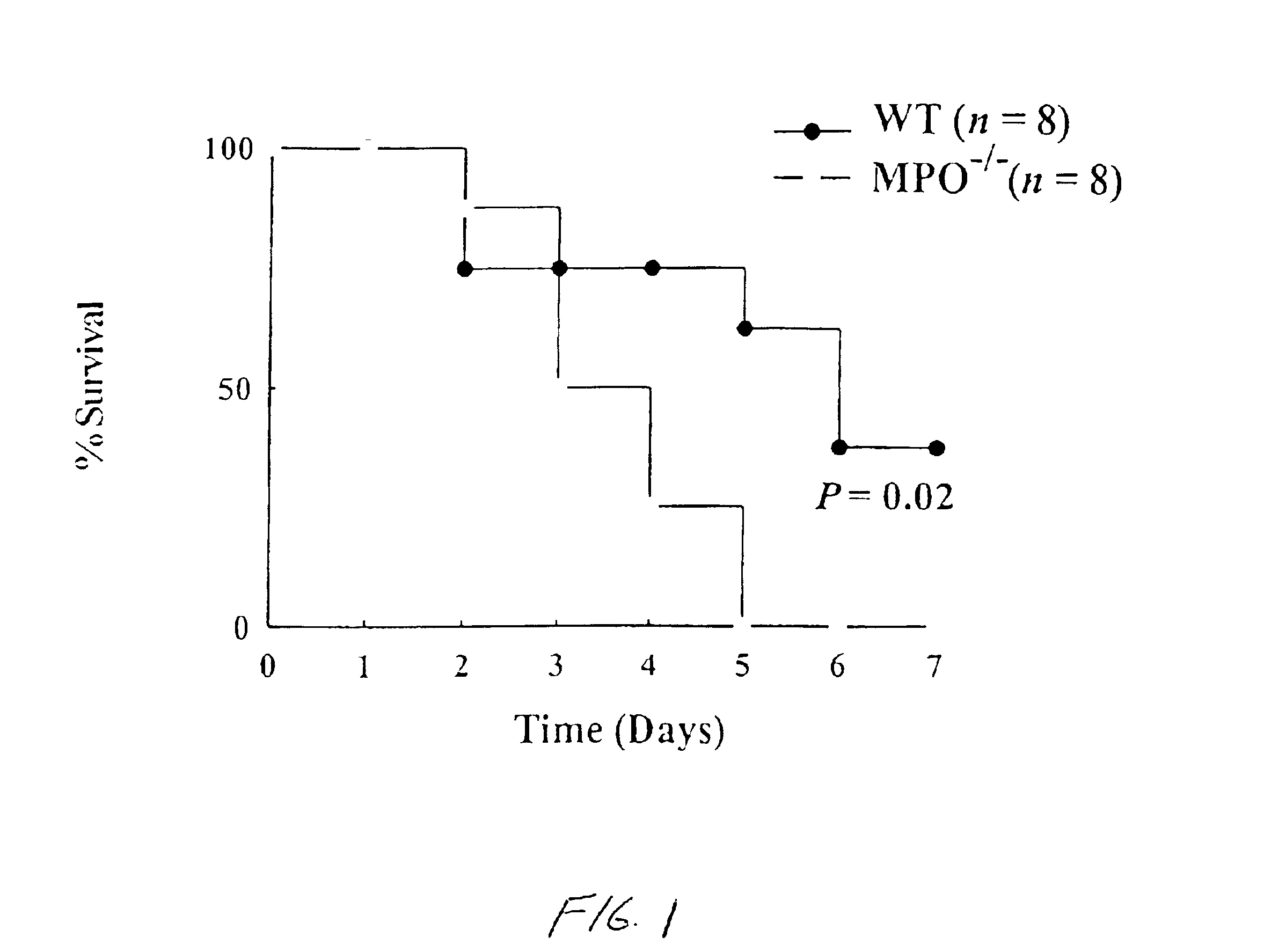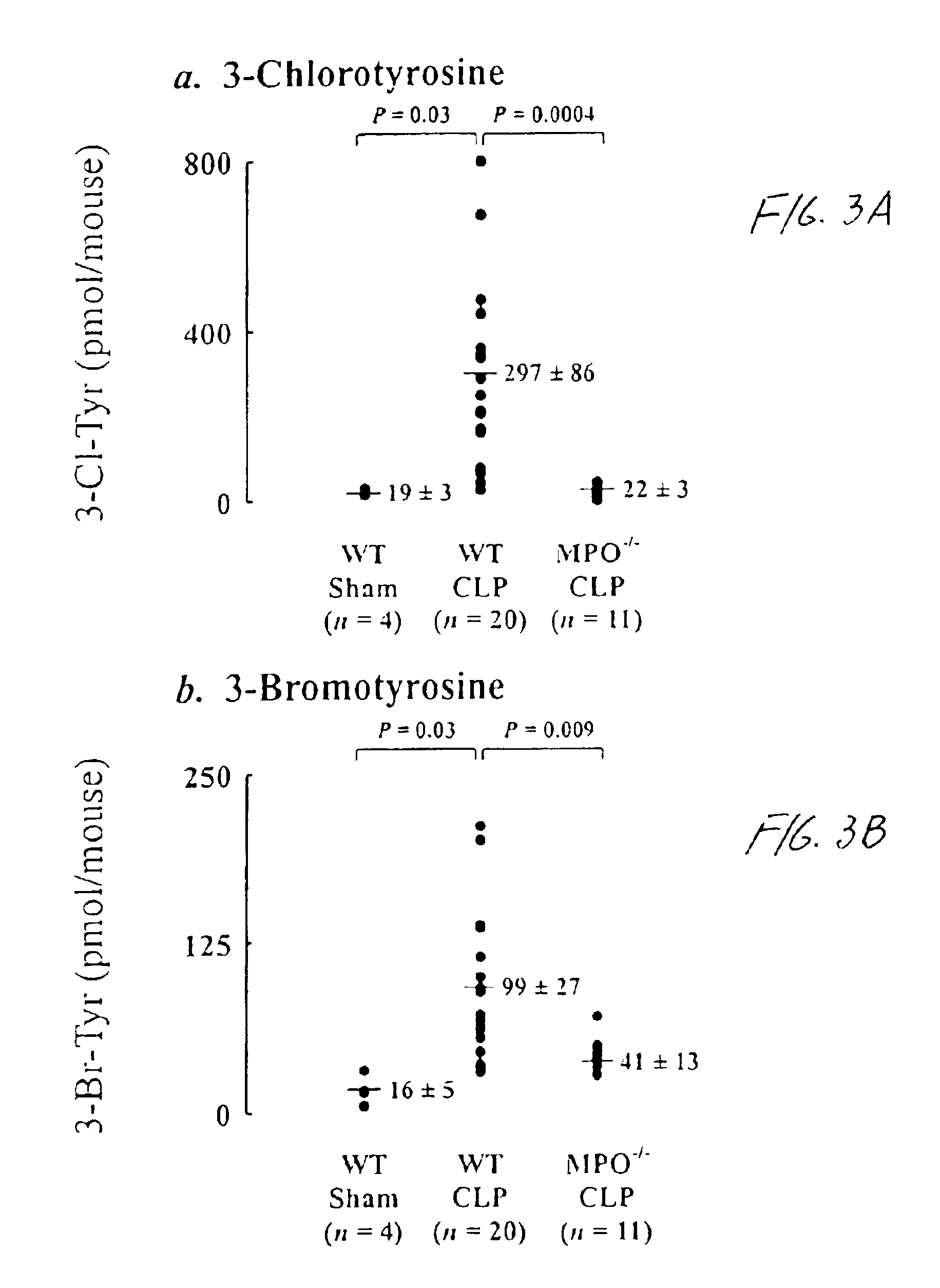Method for detecting conditions indicative of sepsis
a technology of sepsis and detecting conditions, applied in the field of sepsis detecting conditions indicative of sepsis, can solve the problems of septicemia being the leading cause of death, sepsis is toxic, and agents such as monoclonal antibodies and antagonists
- Summary
- Abstract
- Description
- Claims
- Application Information
AI Technical Summary
Benefits of technology
Problems solved by technology
Method used
Image
Examples
examples
[0035]Materials. All materials were purchased from Sigma-Aldrich (St. Louis, Mo.) or Fisher (Pittsburgh, Pa.) unless otherwise indicated. Isotope-labeled amino acids were from Cambridge Isotope Laboratories (Andover, Mass.). Rabbit polyclonal antibody was raised against a peptide present in mouse myeloperoxidase (NTLPKLNLTSWKET) [SEQ ID NO:1] (ref. 14).
[0036]Animals. The Animal Studies Committee of Washington University School of Medicine approved all animal studies. Myeloperoxidase-deficient mice were generated in a 129 / SvJ background; they were backcrossed at least 4 generations into the C57BL / 6J background prior to use (ref. 14). C57B1 / 6J and Sv129 / J mice were from Jackson Laboratories (Bar Harbor, Mass.). Mice were maintained under pathogen-free conditions on a 12 h light-dark schedule and allowed ad lithium access to rodent diet 5001 (Harlan-Teklad, Madison, Wis.).
[0037]General procedures. Myeloperoxidase was purified from HL60 cells (ref. 19). Enzyme was apparently pure as ass...
PUM
| Property | Measurement | Unit |
|---|---|---|
| pH | aaaaa | aaaaa |
| pH | aaaaa | aaaaa |
| flow rate | aaaaa | aaaaa |
Abstract
Description
Claims
Application Information
 Login to View More
Login to View More - R&D
- Intellectual Property
- Life Sciences
- Materials
- Tech Scout
- Unparalleled Data Quality
- Higher Quality Content
- 60% Fewer Hallucinations
Browse by: Latest US Patents, China's latest patents, Technical Efficacy Thesaurus, Application Domain, Technology Topic, Popular Technical Reports.
© 2025 PatSnap. All rights reserved.Legal|Privacy policy|Modern Slavery Act Transparency Statement|Sitemap|About US| Contact US: help@patsnap.com



